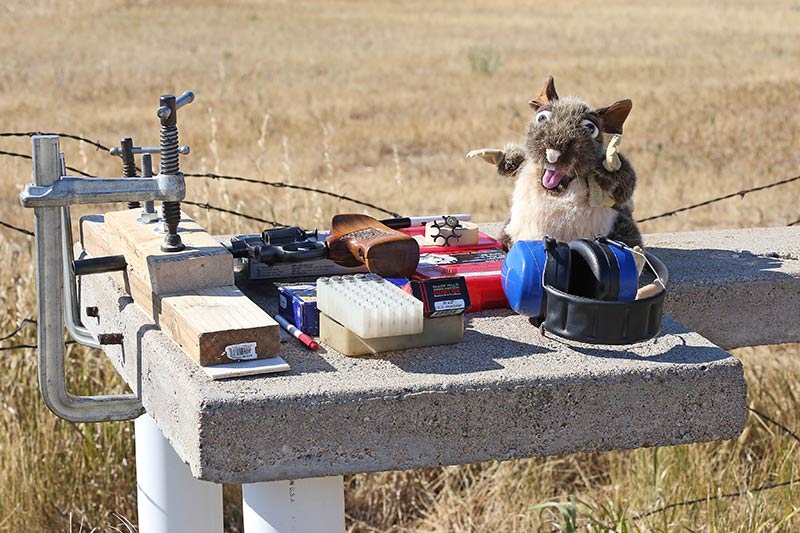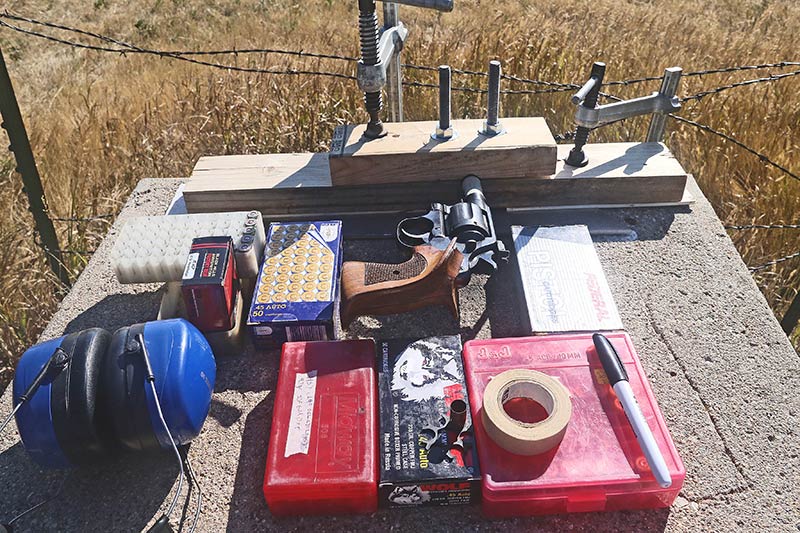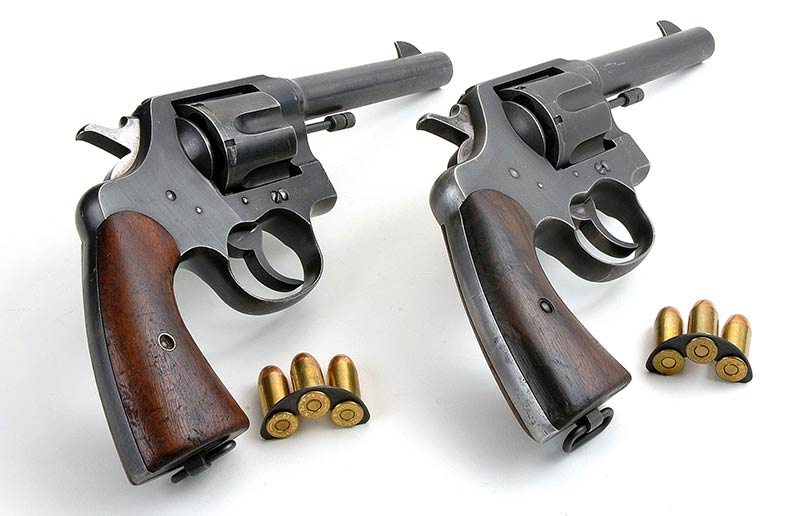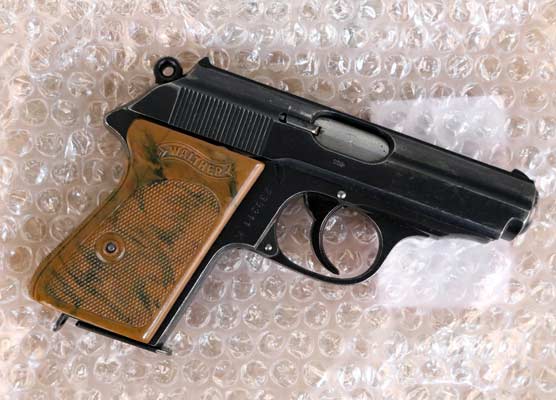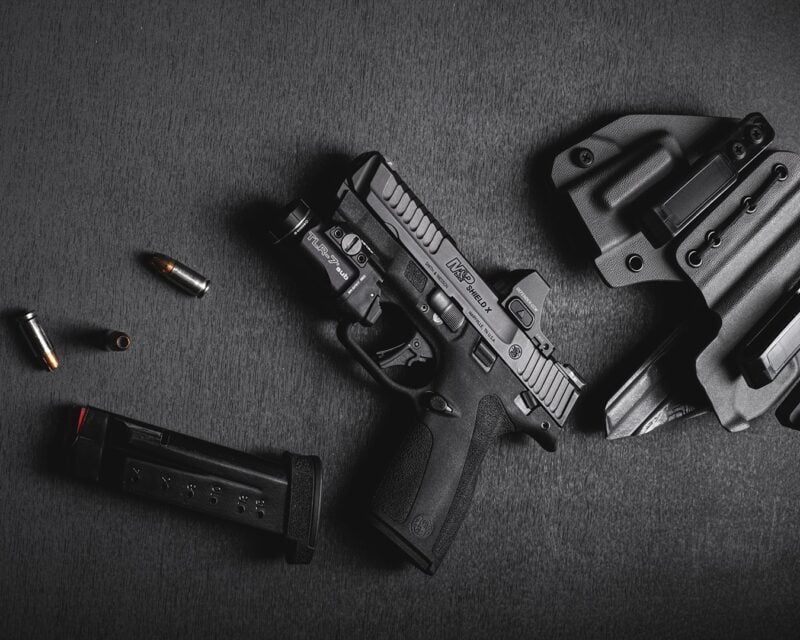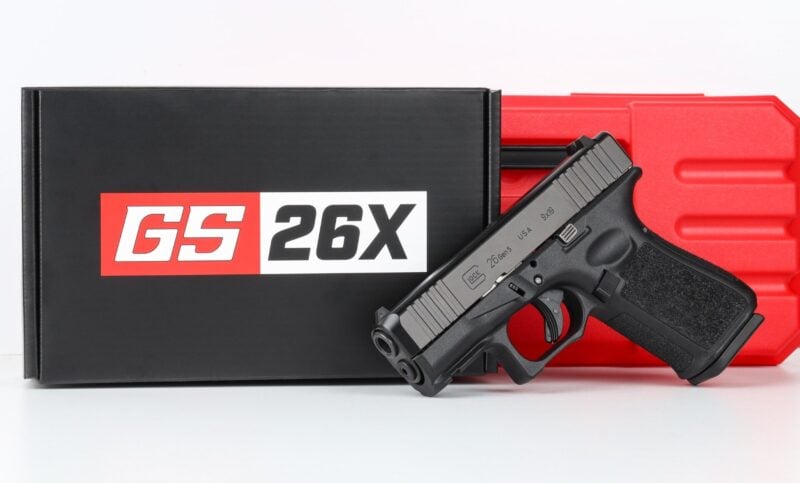Exclusive: Without The
Human Hand
Accuracy Testing With a Wooden Clamp?
Is This Even A Good Idea?
I’m informed by a focus group of “one” new shooters like a bit of boring technical stuff. They want to learn from someone who has “done it.” I suspect a focus group of “one” is about as useful as a 3-round group though. The goal here was to see if I could drum-up a modest test rig just about anyone could build to compete with the much-vaunted Ransom Rest in accuracy testing. Did I succeed? Let’s find out.
I prefer a no-wind day for ammo testing even if wind will not have much affect at 26 yards. So, to keep opportunities for Murphy minimized I waited for a calm day. As such things go, it was 100 F. Murphy always wins somehow.
The Setup
The gun getting gently hugged by a couple of 2X4’s is a Colt 1917. Older shooters will likely wonder why the 1917 has a non-standard barrel. They can keep wondering as that is a comedy for another day. For the youngsters, the Colt 1917 came with a 6″ barrel as standard equipment when issued to the American Expeditionary Forces (AEF) in 1917.
The Cartridge
The 1917 can fire 45 auto with a moon clip (AEF were issued “Half Moon Clips) or something called a .45 Auto Rim (.45 AR). For my testing I used a RIMZ moon clip by Beckham Products Design LLC for non-.45 AR ammo. Loading steel moon clips is easy. Unloading — not so much. The RIMZ moon clip makes an ugly job pleasant.
Contribution To Consistency
One chamber of the cylinder was used for all of the rounds fired. The masking tape used to mark the chamber did take a beating. Tape was also used to monitor movement of the gun (small) and fixture (none).
Results: The Good, The Bad And The Ugly
The results on the target are fairly self explanatory but I will belabor a few points. Starting with the ugly, measured by group size: Federal Hi-Shok (7.1″) and my Speer Gold Dot hand loads (7″). Don’t get bent about this ammo being junk (well, my hand loads might be, but that is not Speer’s fault). The barrel is a strange one and I suspect modern bullets do not work well with it. The story of the 1917 will follow in the aforementioned comedy, complete with Dum-dums and a dummy. I will posit some thoughts on why modern bullets fail in this barrel. Suffice to say it’s not original, never intended for this sort of thing, etc. but it was all I had at-hand to use in the jig. Still, we may learn something yet.
The surprise was how well the old TW 1954 (Twin Cities Ordnance) steel case ball ammo did for groups (2.8″). Only the Black Hills Ammo “Honey Badger” turned in a better showing (2″). I expected the Honey Badger to be my calibrating round based on good results from previous shooting with the 1917 and other guns. I also assumed the Federal would be a calibrating round. Assumptions — nothing Murphy likes more than people to run with assumptions.
A few thoughts on the number of rounds to define a statically accurate group size, which may cause a few people angst.
I walked down to the target and numbered each round as they were fired (…that was so much fun at 100 degrees on a cloudless August day). The numbered holes demonstrate clearly when the group size is defined. The very best (Honey at 2″) and the very worst (Federal at 7.1″) were the only groups reaching maximum group size within three rounds. All of the other ammo did not reach max group size until four to six holes appeared on the paper.

This gun seems to have a sweet spot for Black Hills Honey Badger ammo, their new copper bulleted personal defense ammo.
These are two groups Ray fired from a hand-held rest position to see if it made any difference from the fixture.
The lateral dispersion is likely due to the sight being loose. “Like the screw in my brain at times!” says Ray.
Honey Badger Rocks
The photo with the 1917 and the two groups fired with Honey badger will be the final note to my babbling. Those two groups were fired by the hand of a man using the back of a pickup box as a rest. The back sight on the gun has a tendency to shoot loose (a poor design on my part) and I have a tendency to not notice when the sight is loose. The horizontal stringing may be from a loose sight which moves side to side but not up and down. If I stray into the land of evil assumptions, the gun and Honey Badger will shoot way better when the barrel is not getting a hug from 2X4’s. I suspect my test fixture may not be an accurate evaluation method. I know it would mess up any good vibes on a longer barrel.
If there seems to be interest in this sort of esoteric testing and Roy does not pull his hair out in frustration or boredom, I will explore this in future comedies — after I build a different fixture(s).
Again, I want to stress the ammo is fine, it’s the gun. But I was hoping for enough consistency to learn something. I think we learned I need to learn more about fixture building? We’ll see. I just got a new milling machine. That’s going to open up plenty of new doors I’ll bet.

